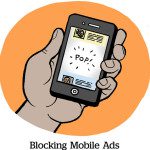 Marriott is one among a platoon of non-advertising companies that have launched programmatic ad platforms lately.
Marriott is one among a platoon of non-advertising companies that have launched programmatic ad platforms lately.
Just don’t call Marriott’s new platform a retail media network (RMN).
“I wouldn’t put us in that category,” said Elizabeth Donovan, global director and head of ad revenue for the Marriott Media Network, as the new business is called. “We are a travel media network and I think more like a publisher, too.”
Framing the Marriott Media Network as a publisher, as opposed to a SaaS-based supply source play, is an important distinction. Although Marriott Bonvoy loyalty program has logged-in members and closed-loop attribution, which is similar to a retail media loyalty program play, Donovan said Marriott will also focus on editorial and content solutions.
For example, the Bonvoy traveler site offers editorial sponsorships – a Subaru campaign, say, built around the idea of family road trips – and enables potential podcast integrations and social media content creation. Eventually, Marriott Media could create custom video production campaigns for in-room TVs.
“Brands will be partnering with us to create our own content in the future,” Donovan said.
Still, Marriott is not a typical publisher.
Yes, the Marriott Media Network uses Yahoo as an exclusive SSP for its inventory, which isn’t out of the ordinary. And unlike other, more traditional RMNs, Marriott’s supply can be targeted and measured holistically across Yahoo’s universe of open web programmatic inventory. A Yahoo ID identified on a Marriott hotel site will sync to a Yahoo ID served to SomeOtherSite.com.
Marriott has had an advertising business for almost ten years, according to Donovan, but this is its first programmatic offering and the first time its inventory is being pooled and sold to agencies, as opposed to working directly with major brand partners, like airlines and restaurant booking services that serve ads on screens in a hotel lobby.
And the company is still only taking baby steps in the direction of a strong holistic platform offering, Donovan said.
For one, the Marriott Media Network connects many disparate internal groups. Beyond building external sales relationships, for instance, the Marriott partnerships team identifies and contracts with partners such rideshare apps and airlines where there are one plus one equals three opportunities to help each other grow.
But that’s different from the media business. The Bonvoy editorial team that makes custom travel content is a different group, too.
Pilot ad campaigns on the travel media network are starting this summer, Donovan said. But many of the early growth opportunities will come from within Marriott first.
Marriott is being cautious about programmatic targeting and segmentation. Advertisers may want to use Marriott data to, for example, create segments of luxury, high-income travelers who book suites or fancy hotels or, on the flip side, to reach people who buy rooms only at promotional discounts or at cheaper hotels. But advertisers will not be able to do that.
To start, campaigns will be isolated by hotel brand. Sheraton, Westin and JW Marriott, all Marriott brands, are purchasable separately and anonymously. The same person who searched for rooms on multiple hotel sites wouldn’t even by deduped.
Marriott Media is also not venturing into an audience network play. For now, at least, it will serve ads only to Marriott-owned properties, including sites, apps, WiFi log-in portals and wherever else they can fit an IAB-standard unit.
“We’re not there yet, though we’re thinking about it,” Donovan said in reference to a potential audience extension product.
Marriott also hopes to expand into non-endemic advertiser categories. Airlines, rideshare and restaurant bookings are obvious extensions for a hotel. But what about financial services or insurance companies that want to target upscale travelers?
“Not at this time,” Donovan said. “We’re focused on solving for the nuances of travel and our consumer experience.”
CPG and grocery type brands have been early adopters of new retailer-based programmatic platforms. Part of Donovan’s job will be to demonstrate how a travel media network fits into a brand’s media plan by following, at least to some extent, the playbook of those that came before. A clothing company, for instance, could identify potential customers traveling to a ski resort, and an entertainment company could promote shows, zoos or whatever fun things there are to do in a particular city.
But, really, don’t call Marriot’s platform an RMN.
“I really want to reiterate,” Donovan said, “that this is not like a typical retail media network.”














